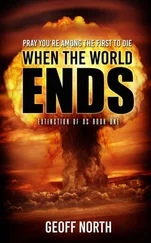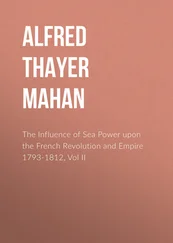81. Author’s interview with Lawrence B. Wilkerson, June 12, 2009.
82. Quotations are from the following: Interview with Lawrence B. Wilkerson, June 12, 2009, and interview with Paul Pillar, June 10, 2009. With regard to decision-making process and going to war, Leslie H. Gelb and Richard K. Betts show that, while the foreign policy of intervention in Vietnam failed, the system of decision-making worked (The Irony of Vietnam: The System Worked [Washington, DC: Brookings Institution Press, 1979]). For further confirmation of the lack of standard bureaucratic and interagency process in the decision to go to war, see also the memoir of Richard N. Haass, director of policy planning in the State Department for Bush II (War of Necessity, War of Choice: A Memoir of Two Iraq Wars [New York: Simon & Schuster, 2009], especially p. 5 and pp. 212–213).
83. For example, David L. Phillips writes: “Cheney’s seniority, experience, and bureaucratic abilities gave him vast influence in the White House. . . . Cheney was given unprecedented permission to participate in all meetings of the (principals) committee. The Office of the Vice President (OVP) functioned like an independent body wielding enormous influence. Cheney asserted a major role in national security policy and created his own National Security Council staff” (David L. Phillips, Losing Iraq: Inside the Postwar Reconstruction Fiasco [New York: Basic Books, 2005], p. 59). John Prados, a senior fellow with the National Security Archives in Washington has come to the same conclusion (John Prados, “The Pros from Dover,” Bulletin of the Atomic Scientists 60, no. 01 [January/February 2004], pp. 44–51). Veteran observers of executive branch decision-making processes reinforce this point (for instance, interview with Larry Wilkerson, June 12, 2009; interview with Paul Pillar, June 10, 2009). On this point, see Chapter 4, Enhanced Executive Power.
84. With regard to Libby, he allegedly leaked Plame’s identity in an attempt to discredit former ambassador Joseph Wilson, her husband, who had written an op-ed in the New York Times challenging intelligence regarding Iraq’s attempt to purchase uranium from an African country, thus posing an immediate threat.
David Addington also was a key player in the vice president’s office. While long associated with Cheney more than the Neocon core, Addington helped fulfill core missions, both as chief of staff to Libby and after he replaced him when Libby left under a cloud of legal troubles. According to the New Yorker ’s Jane Mayer, Addington is the architect of the NSA’s warrantless wiretapping program and a new legal anti-terror strategy that supplants the American constitution. See Jane Mayer, The Dark Side: The Inside Story of How the War on Terror Turned into a War on American Ideals (New York: Doubleday, 2008), p. 70.
Continuity was maintained after Libby’s forced retirement. John Hannah, who previously had been the liaison between Cheney’s office and Chalabi, became the vice president’s national security adviser, with David Wurmser, formerly of the Pentagon Counter Terrorism Evaluation Group who joined Cheney’s office as Mideast adviser in 2003, still in that post. Jim Lobe and Michael Flynn, “The Rise and Decline of the Neoconservatives,” A Right Web Special Report, November 17, 2006, http://rightweb.irc-online.org/rw/3713. Wurmser served as special adviser to the Undersecretary of State for Arms Control and International Security in the State Department from 2001 to 2003 and as Mideast adviser in the office of the vice president from 2003 to 2007. In his Washington Note blog of July 24, 2007, Steven Clemons described Wurmser as “one of the Vice President’s most dedicated neoconservative spear-carriers,” http://www.thewashingtonnote.com/archives/002240.php.
For Wilkerson quote, see Lawrence B. Wilkerson, “The Whitehouse Cabal,” Los Angeles Times , October 25, 2005, p. B11. With regard to undercutting the NSC, Wilkerson reported this in National Public Radio (cited in “Former Powell Aide Links Cheney’s office to Abuse Directives,” New York Times , November 3, 2005, http://www.nytimes.com/2005/11/03/world/americas/03iht-cheney.html.) See also James Risen, State of War: The Secret History of the CIA and the Bush Administration (New York: Free Press, 2006). Tellingly, the “Cheney team had . . . technological supremacy over the National Security Council staff” and read their e-mail messages, according to Wilkerson (Cullen Murphy and Todd S. Purdum, “Farewell to All That: An Oral History of the Bush White House,” Vanity Fair , February 2009, p. 30, http://www.vanityfair.com/politics/features/2009/02/bush-oral-history200902).
Patrick Lang, a Middle East analyst and former director of human intelligence collection for the Defense Intelligence Agency, adds that, under Libby’s direction, Undersecretary of Defense (and Neocon core ally) Luti did the bidding of this “shadow National Security Council” (W. Patrick Lang, “Drinking the Kool-Aid,” Middle East Policy Council Journal XI, no. 2 [Summer 2004], p. 51, http://www.mepc.org/journal_vol11/0406_lang.asp).
85. Leverett quotes are from author’s interview with Flynt Leverett, May 8, 2009.
With regard to claims that Libby and the vice president helped assemble: These included the allegation that, in the months leading up to 9/11, lead hijacker Mohamed Atta had met with an Iraqi agent in the Czech Republic (Dana Priest and Glenn Kessler, “Iraq, 9/11 Still Linked to Cheney,” Washington Post , September 29, 2003).
For further reference, see David Corn and Michael Isikoff, Hubris: The Inside Story of Spin, Scandal, and the Selling of the Iraq War (New York: Crown Publishers, 2006).
86. The Perle quote is from Weisman, Prince of Darkness: Richard Perle , p. 172.
With regard to think tanks with which the neoconservatives are affiliated: These think tanks included JINSA, the AEI, the Middle East Media Research Institute, and the Washington Institute for Near East Policy. See, for example, Jim Lobe, “Pentagon Office Base for Neoconservative Network Manipulating Iraq Intelligence,” September 15, 2003, http://www.fpif.org/commentary/2003/0309feith.html.
The Kwiatkowski quote is from: Karen Kwiatkowski, “Conscientious Objector: A Senior Air Force Officer Watches Civilians Craft the War Plan,” The American Conservative , December 15, 2003. Kwiatkowski also points out that the civilian head of the Israel, Lebanon, and Syria desk office was replaced by a political appointee from the neoconservative Washington Institute for Near East Policy, although previously such appointees were seldom given positions as country desk officers. Karen Kwiatkowski, “The New Pentagon Papers,” Salon.com, March 10, 2004, p. 1, http://dir.salon.com/story/opinion/feature/2004/03/10/osp_moveon/index.html.
87. Lang’s encounter with Feith is recounted in Steve Clemons, thewashingtonnote.com, May 26, 2007, http://www.thewashingtonnote.
com/archives/2007/05/pat_lang_lawren/. Lang, who served as Defense Intelligence Officer for the Middle East, South Asia and Counter-Terrorism from 1985 to 1992 and Director of Defense HUMINT from 1992–1994, was awarded the Presidential Rank of Distinguished Executive. See also James Risen, “How Pair’s Finding on Terror Led to Clash on Shaping Intelligence,” New York Times , April 28, 2004, p. A2, http://www.nytimes.com/2004/04/28/politics/28INTE.html?ex=1216785600&en=a425abba18379e73&ei=5070 (accessed 7/21/2008), and Lang, “Drinking the Kool-Aid.”
88. The Pillar quote is from Paul R. Pillar, “Intelligence, Policy, and the War in Iraq,” Foreign Affairs , March/April 2006, http://www.foreignaffairs.org/20060301faessay85202/paul-r-pillar/intelligence-policy-and-the-war-in-iraq.html.
Читать дальше












